Optimal Skin Care Routine For Oily Skin Guide
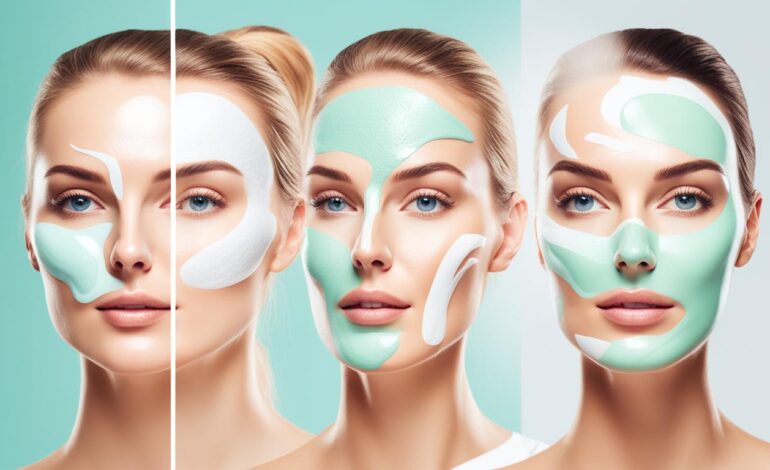
Having oily skin can be frustrating, but with the right skin care routine, you can effectively control shine, prevent acne, and achieve a balanced and healthy complexion. By following these steps, you can create an optimal skin care routine tailored specifically for oily skin.
Key Takeaways: Skin Care Routine For Oily Skin
- Follow a specific skin care routine for oily skin to control shine and prevent breakouts.
- Choose skin care products formulated for oily skin to regulate oil production.
- Cleanse your skin regularly, considering double cleansing and exfoliating cleansers.
- Use toners with salicylic acid to help regulate oil production.
- Treat trouble areas with acne treatments and retinol suitable for oily skin.
Understanding Oily Skin and Its Causes
What is Oily Skin?
Oily skin is a common skin type characterized by excessive sebum production from the sebaceous glands in the skin. This overproduction of oil can lead to a shiny complexion and an increased risk of acne breakouts.
Causes of Oily Skin
Oily skin can be caused by various factors, including:
- Genetics: Some individuals are genetically predisposed to have oily skin.
- Hormonal changes: Hormonal fluctuations, such as during puberty or pregnancy, can increase sebum production.
- Diet: Consuming a diet high in refined carbohydrates and unhealthy fats may contribute to oily skin.
- Cosmetics: Certain cosmetics and skincare products can clog pores and stimulate excess oil production.
- Climate: Hot and humid climates can cause the sebaceous glands to be more active.
- Stress: Stress can disrupt hormone levels and lead to increased sebum production.
Understanding the causes of oily skin can help you identify the best approach to manage and improve your skin condition.
<!–
| Causes of Oily Skin | Description |
|---|---|
| Genetics | Some individuals are genetically predisposed to have oily skin. |
| Hormonal changes | Hormonal fluctuations, such as during puberty or pregnancy, can increase sebum production. |
| Diet | Consuming a diet high in refined carbohydrates and unhealthy fats may contribute to oily skin. |
| Cosmetics | Certain cosmetics and skincare products can clog pores and stimulate excess oil production. |
| Climate | Hot and humid climates can cause the sebaceous glands to be more active. |
| Stress | Stress can disrupt hormone levels and lead to increased sebum production. |
–>
Step 1: Cleanse
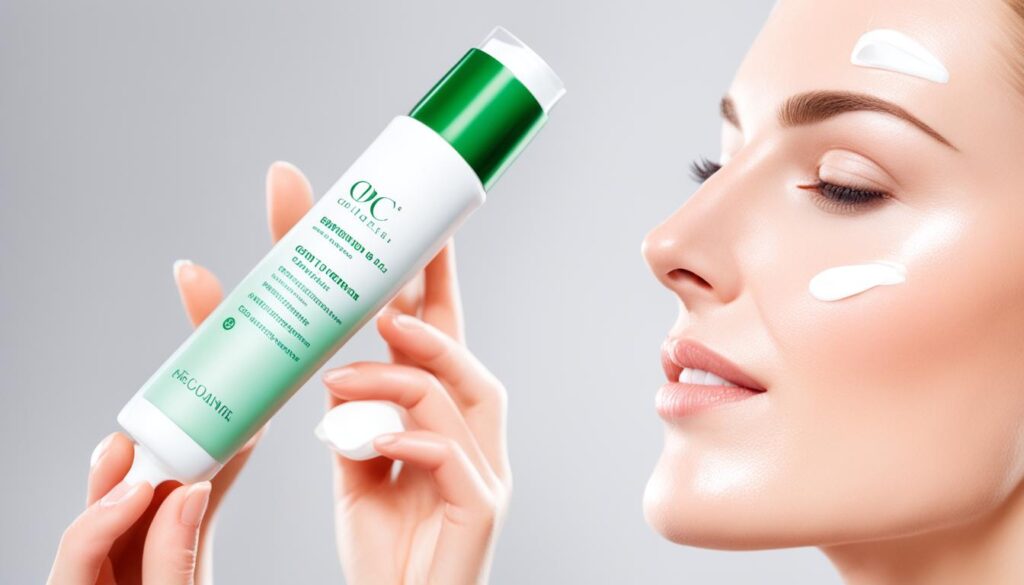
Cleansing is the first and most crucial step in any skincare routine for oily skin. To effectively cleanse oily skin, it’s important to use a gentle cleanser specifically formulated for oily skin types. This will help remove excess oil, dirt, and impurities without stripping the skin.
Consider incorporating a double cleanse method if you have extremely oily or acne-prone skin, or if you’ve been sweating. Double cleansing involves using an oil-based cleanser first to remove oil-based impurities like makeup and sunscreen, followed by a water-based cleanser to cleanse the skin.
An exfoliating cleanser can also be beneficial for oily skin. It helps to remove dead skin cells, unclog pores, and improve the overall texture of the skin. Look for cleansers with gentle exfoliating ingredients like salicylic acid or fruit enzymes.
Remember to cleanse your skin every morning and evening to keep it clean and fresh. Massage the cleanser onto damp skin using gentle circular motions, and rinse thoroughly with lukewarm water. Pat your skin dry with a clean towel.
Tips for cleansing oily skin:
- Choose a cleanser that is specifically formulated for oily skin.
- Consider double cleansing, especially after activities that make you sweat.
- Use gentle, circular motions when massaging the cleanser into your skin.
- Rinse your face thoroughly with lukewarm water to remove all traces of cleanser.
- Pat your skin dry with a clean towel, avoid rubbing.
Step 2: Use a Toner

After cleansing, toning is crucial for oily skin. A toner helps balance the skin’s pH levels, remove any residual impurities, and prepare the skin for the next steps of your skincare routine.
When choosing a toner for oily skin, it is important to look for alcohol-free options. Alcohol-based toners may strip the skin of its natural oils, leading to excessive oil production and potential irritation.
Instead, opt for toners specifically formulated for oily skin. These toners often contain ingredients like salicylic acid, a beta hydroxy acid that helps regulate oil production and keep pores clear. Salicylic acid is known for its ability to penetrate the pores and help remove excess oil and impurities.
When applying a toner, pour a small amount onto a cotton pad and gently swipe it over your face. Focus on areas that are more prone to oiliness, such as the T-zone (forehead, nose, and chin).
Using a toner regularly can help control excess oil, minimize the appearance of pores, and leave your skin feeling refreshed and balanced.
Step 3: Treat Trouble Areas
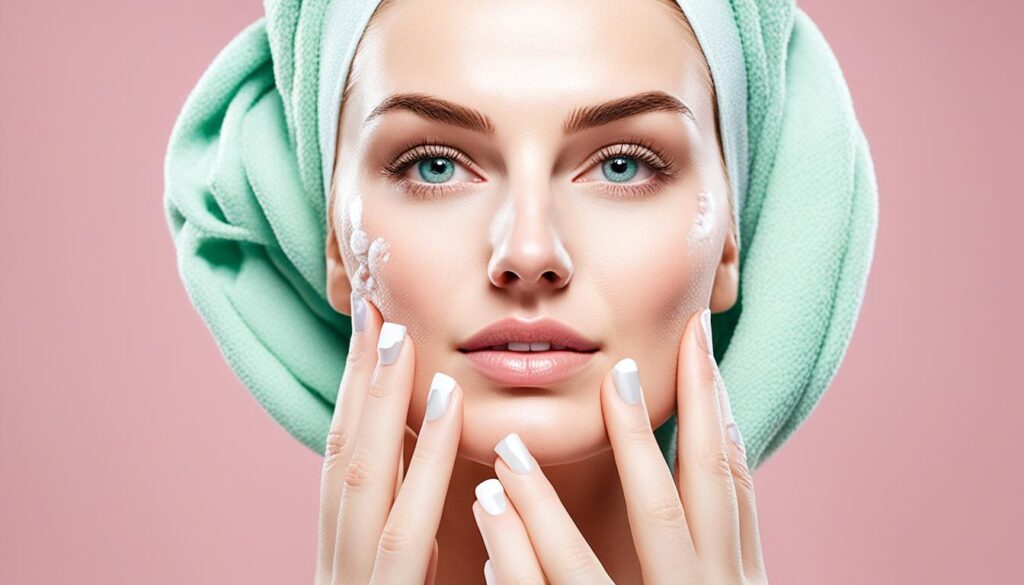
If you’re prone to acne, it’s essential to incorporate targeted skincare treatments into your routine to address trouble areas. By using acne treatments that contain benzoyl peroxide or sulfur, you can effectively combat acne breakouts and promote clearer skin. In the morning, after toning, apply a thin layer of benzoyl peroxide or sulfur to any problem areas on your face, focusing on active breakouts or areas prone to acne.
In the evening, it’s important to continue treating trouble areas to maintain clear and healthy skin. Incorporate a retinol product into your nighttime routine. Retinol is a powerful ingredient that helps unclog pores, reduce inflammation, and promote skin cell turnover. By keeping your pores clear and exfoliating the skin, retinol helps prevent future breakouts and improves overall skin texture. Look for acne treatments and retinol products specifically formulated for oily skin.
Here is a recommended acne treatment and targeted skincare treatment routine for oily skin:
- Morning:
- Cleanse your face with an oily skin cleanser.
- Tone your skin using an alcohol-free toner.
- Apply benzoyl peroxide or sulfur to trouble areas.
- Moisturize with an oil-free moisturizer.
- Apply an oil-free, broad-spectrum sunscreen.
- Evening:
- Double cleanse to remove any makeup, dirt, or excess oil.
- Tone your skin using an alcohol-free toner.
- Apply retinol to trouble areas.
- Moisturize with an oil-free moisturizer.
| Treatment | Description |
|---|---|
| Benzoyl Peroxide | Helps control acne-causing bacteria and reduces inflammation. |
| Sulfur | Assists in drying out excess oil and unclogging pores. |
| Retinol | Promotes skin cell turnover, unclogs pores, and prevents acne. |
Remember to choose products that are suitable for your specific needs and consult with a dermatologist if you have any concerns or persistent acne issues. Following a targeted skincare treatment routine can help you manage acne and achieve a clearer complexion.
Step 4: Moisturize
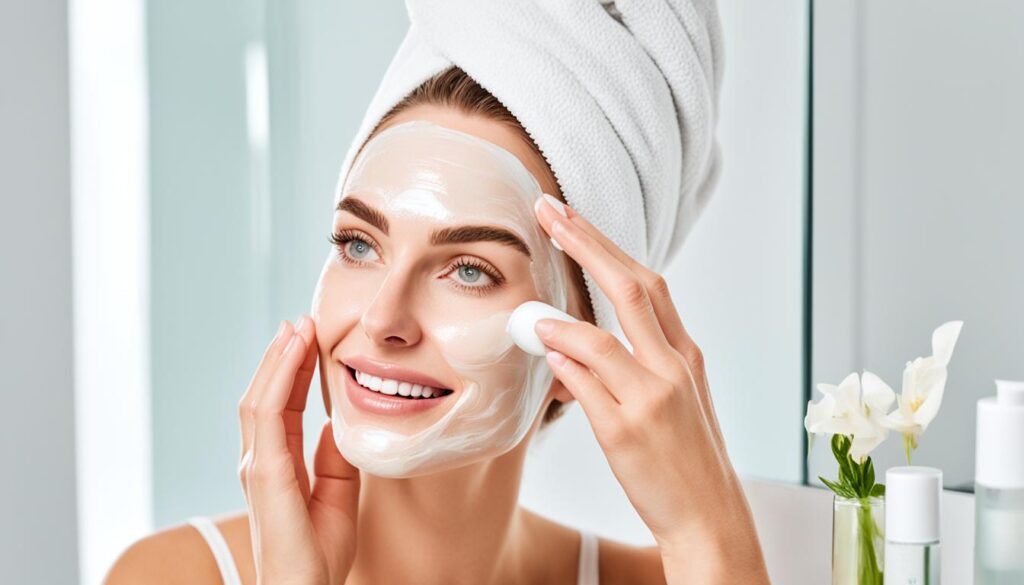
While it may seem counterintuitive, moisturizing is essential for oily skin. Using an oil-free, lightweight moisturizer can help provide hydration without clogging pores. Look for moisturizers that contain key ingredients like hyaluronic acid and ceramides, which can help maintain a balanced and healthy complexion.
Moisturizing oily skin is important because it helps to replenish the skin’s moisture barrier and prevent it from producing excess oil. When the skin is dehydrated, it can actually produce more oil to compensate, leading to an even greasier complexion. By moisturizing regularly, you can help regulate the skin’s oil production and keep it in balance.
When choosing a moisturizer for oily skin, opt for oil-free formulas that are specifically designed to hydrate without adding extra shine or heaviness. Lightweight moisturizers are ideal for oily skin as they absorb quickly and leave a matte finish.
Hyaluronic acid is a key ingredient to look for in moisturizers for oily skin. It is a humectant that attracts and retains moisture, helping to hydrate the skin without weighing it down. Ceramides, on the other hand, help to strengthen the skin’s barrier function and lock in moisture. Together, these ingredients can help maintain optimal hydration levels in oily skin.
Remember, even though you have oily skin, skipping moisturizer can actually make the problem worse. So, embrace the moisturizer and keep your oily skin well-nourished and balanced.
“Moisturizing oily skin can actually help regulate oil production and keep the skin in balance.”
Step 5: Apply SPF
Don’t forget to protect your skin from the sun’s harmful rays. It’s important to apply sunscreen every morning, regardless of the weather. For oily skin, opt for an oil-free sunscreen with broad-spectrum SPF to shield your skin from both UVA and UVB rays.
Look for lightweight formulas specifically designed for oily skin, as they won’t clog your pores or make your skin feel greasy. A broad-spectrum SPF of at least 30 is recommended to ensure adequate sun protection.
Remember to reapply sunscreen throughout the day, especially if you’re spending time outdoors or sweating. This will help maintain a consistent level of sun protection and prevent sunburns, premature aging, and skin damage.
Here’s an example of a suggested application routine:
- Cleanse your face in the morning.
- Tone your skin to prep it for sunscreen.
- Apply an oil-free, broad-spectrum SPF 30+ sunscreen.
- Follow up with your regular makeup routine if desired.
- Reapply sunscreen every 2 hours or as needed throughout the day.
Remember, sun protection is essential for everyone, including those with oily skin. By incorporating an oil-free, broad-spectrum sunscreen into your skincare routine, you can effectively safeguard your skin from the harmful effects of UV rays.
Now that we’ve covered the importance of sun protection, let’s explore key ingredients commonly found in skincare products for oily skin.
Key Ingredients for Oily Skin Care

When it comes to choosing skincare products for oily skin, it’s important to look for key ingredients that can regulate oil production and improve overall skin health. Incorporating these ingredients into your skincare routine can help address common concerns such as excess oil, enlarged pores, and uneven skin texture.
Hyaluronic Acid
Hyaluronic acid is a powerhouse ingredient for oily skin. Despite its name, it is not an oil but a hydrating substance that can attract and retain moisture in the skin. It provides lightweight hydration without clogging pores, helping to balance the skin’s moisture levels.
Niacinamide
Niacinamide, also known as vitamin B3, is another excellent ingredient for oily skin. It helps regulate oil production by controlling sebum secretion from the sebaceous glands. Niacinamide also has anti-inflammatory properties and can improve the appearance of enlarged pores, making it a valuable addition to your skincare routine.
Ceramides
Ceramides are natural lipids found in the skin’s outermost layer, the stratum corneum. They help strengthen the skin barrier, improving moisture retention and protecting against external aggressors. Oily skin can benefit from ceramides as they help balance oil production and maintain a healthier complexion.
Retinol
Retinol, a derivative of vitamin A, is well-known for its ability to promote skin cell turnover and improve the overall texture and appearance of the skin. For oily skin, retinol can help keep pores clear by preventing the buildup of dead skin cells and excess oil.
By incorporating skincare products containing these key ingredients, you can effectively manage oily skin and address common concerns. Remember to patch test new products and introduce them gradually into your routine to ensure compatibility and avoid any adverse reactions.
Dos and Don’ts for Oily Skin
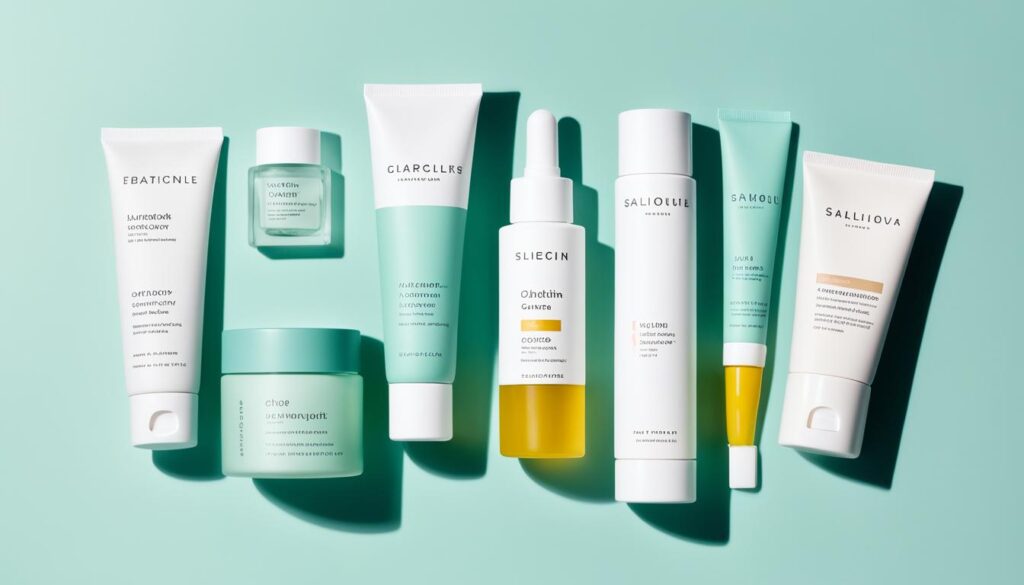
Managing oily skin can be a challenge, but by following these dos and don’ts, you can effectively maintain a balanced and healthy complexion.
Dos:
- Use lightweight skincare products that won’t feel heavy or greasy on your skin. Look for oil-free moisturizers and serums that are specifically formulated for oily skin.
- Choose skincare products with oil-regulating ingredients such as salicylic acid, tea tree oil, or witch hazel. These ingredients help control excess oil production and prevent clogged pores.
- Moisturize regularly to keep your skin hydrated. Even oily skin needs moisture to maintain a healthy skin barrier. Opt for lightweight, non-comedogenic moisturizers that won’t clog your pores.
- Always apply sunscreen to protect your skin from harmful UV rays. Look for oil-free sunscreens with broad-spectrum protection and at least SPF 30. Reapply every few hours, especially if you’re spending time outdoors.
Don’ts:
- Avoid heavy, occlusive skincare products that may weigh down your skin and contribute to excessive oiliness. Opt for lightweight formulas that allow your skin to breathe.
- Avoid using harsh or drying skincare products that strip your skin of its natural oils. This can actually lead to increased oil production as your skin tries to compensate for the loss of moisture.
- Don’t skip moisturizer thinking it will help reduce oiliness. Skipping moisturizer can actually lead to dehydration, which can trigger your skin to produce even more oil.
- Don’t forget to protect your skin from the sun. UV rays can damage your skin and worsen oily skin concerns. Make sunscreen an essential part of your daily skincare routine.
By following these dos and don’ts, you can effectively manage oily skin and maintain a balanced and healthy complexion. Remember to tailor your skincare routine to your specific needs and consult a dermatologist if you have any concerns.
Best Skincare Routine for Oily Skin
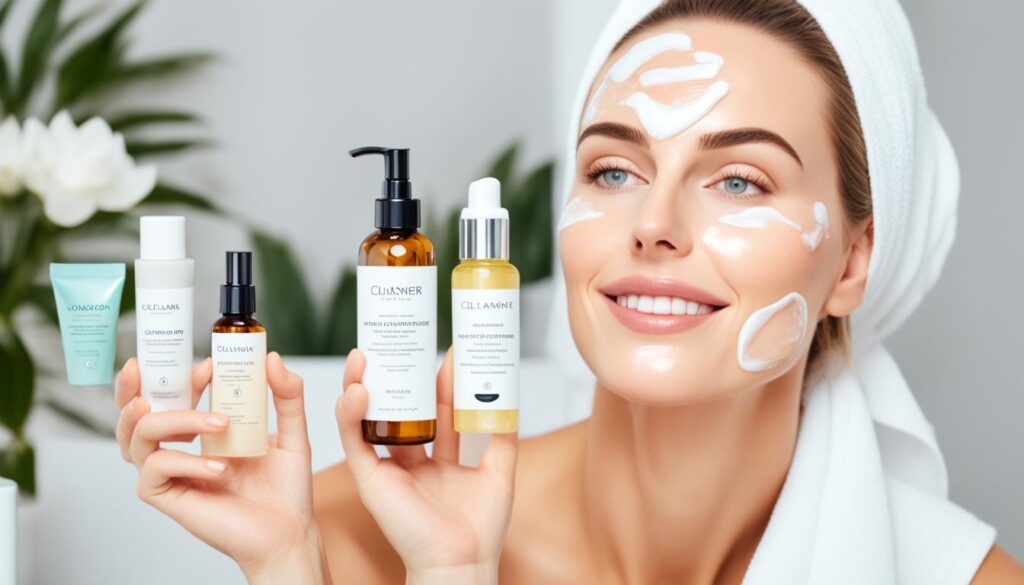
To achieve a balanced and healthy complexion, it is essential to follow a proper skincare routine specifically designed for oily skin. By combining all the steps mentioned in the previous sections, you can create an effective and personalized routine that will control shine, prevent acne breakouts, and promote overall skin health.
Cleansing
The first step in your skincare routine should always be cleansing. Use a gentle cleanser formulated for oily skin to remove excess oil, dirt, and impurities. Consider incorporating double cleansing, particularly after activities that make you sweat. Exfoliating cleansers can also help unclog pores and remove dead skin cells.
Toning
After cleansing, toning is an essential step for oily skin. Look for alcohol-free toners that contain oil-regulating ingredients like salicylic acid or beta hydroxy acid. These ingredients help remove excess oil, minimize the appearance of pores, and prevent breakouts.
Treating
If you suffer from acne or have specific trouble areas, incorporating targeted treatments can be beneficial. Use products with acne-fighting ingredients like benzoyl peroxide or sulfur. In the evening, consider using retinol to maintain clear pores and promote healthy skin renewal.
Moisturizing
Contrary to popular belief, moisturizing is crucial for oily skin. Choose oil-free, lightweight moisturizers that provide hydration without clogging pores. Look for ingredients like hyaluronic acid and ceramides, which help maintain the skin’s moisture balance while reducing excess oil production.
Protecting
Never forget to protect your skin from sun damage by applying a broad-spectrum sunscreen every morning. Look for oil-free formulas with at least SPF 30 to shield your skin from harmful UV rays without causing additional greasiness. Remember to reapply sunscreen throughout the day, especially if you sweat or spend extended periods outdoors.
By following this comprehensive skincare routine consistently, you can achieve a balanced and healthy complexion, controlling oiliness and preventing issues like acne breakouts and enlarged pores.
| Step | Product Recommendation |
|---|---|
| Cleanse | Gentle cleanser formulated for oily skin |
| Tone | Alcohol-free toner with oil-regulating ingredients |
| Treat | Acne treatment (benzoyl peroxide or sulfur) for trouble areas, retinol for evening |
| Moisturize | Oil-free, lightweight moisturizer with hyaluronic acid and ceramides |
| Protect | Oil-free, broad-spectrum sunscreen with at least SPF 30 |
Also Read: Sunscreen Essentials For Healthy, Protected Skin Every Day
Conclusion
Taking care of oily skin requires a specific skincare routine tailored to control shine and prevent breakouts. By following these steps and using the right products with key ingredients for oily skin care, you can achieve a balanced and healthy complexion.
To start your optimal skin care routine for oily skin, begin with a gentle cleanser specifically formulated for oily skin. Double cleansing and exfoliating cleansers can also be beneficial to remove excess oil and dirt.
After cleansing, incorporate a toner that is alcohol-free and contains ingredients like salicylic acid to help regulate oil production. Treat trouble areas with targeted skincare treatments such as acne treatments with benzoyl peroxide or sulfur, and retinol in the evening to keep your pores clear and promote healthy skin.
Moisturizing is essential for oily skin, but be sure to use an oil-free, lightweight moisturizer that won’t clog pores. Don’t forget to apply sunscreen with at least SPF 30 every morning to protect your skin from sun damage.
Remember, consistency is key when it comes to maintaining a skincare routine for oily skin. Consult a dermatologist if you have specific concerns or need personalized recommendations. With the right routine and products, you can achieve a balanced and healthy complexion.
FAQs
Q: What is the best skincare routine for oily skin?
A: The optimal skincare routine for oily skin includes cleansing with a gentle cleanser, using an oil-free moisturizer, applying a non-comedogenic sunscreen, and using products containing salicylic acid or benzoyl peroxide for acne-prone skin.
Q: Can people with oily skin use products for dry skin?
A: It is not recommended for people with oily skin to use products designed for dry skin, as these may be too heavy and can clog pores, leading to breakouts.
Q: How should oily skin be treated differently from other skin types?
A: Oily skin tends to produce more sebum than other skin types, so it requires specific products that can help control excess oil production without stripping the skin of its natural moisture.
Q: What are some tips for managing oily skin?
A: Some tips for oily skin include cleansing the skin twice a day, using oil-free and non-comedogenic products, exfoliating regularly to remove dead skin cells, and staying hydrated to maintain skin balance.
Q: Are there specific skincare products designed for oily skin in men?
A: Yes, there are skincare products tailored specifically for oily skin in men, which typically include mattifying moisturizers, oil-control face washes, and acne-fighting treatments.
Q: What are the best products for oily skin?
A: The best products for oily skin include oil-free moisturizers, water-based cleansers, exfoliating toners with salicylic acid, and lightweight sunscreens that won’t clog pores.
Q: How can I get rid of oily skin?
A: To help manage oily skin, it’s important to follow a consistent skincare routine, use products that target excess oil production, avoid harsh products that strip the skin, and consult with a dermatologist for personalized recommendations.





